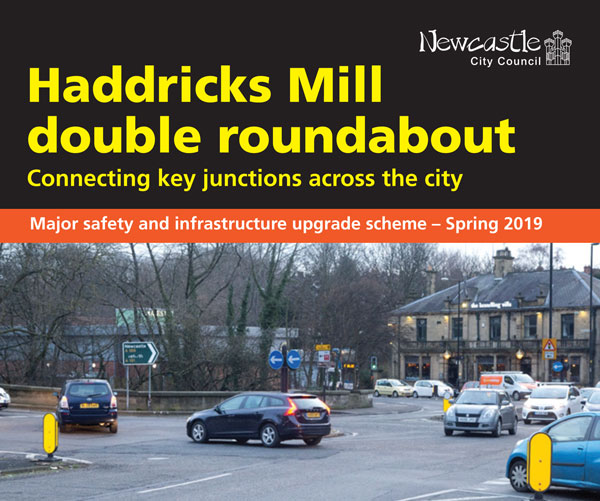Proposals for council-led camera enforcement of the yellow box restriction at the junction of Christon Road and Great North Road, in Gosforth.
The following news release was issued by Newcastle City Council:
“Newcastle City Council is applying to government for additional enforcement powers covering a range of traffic regulations that are currently the responsibility of the police.
The government invited councils to apply to take over these responsibilities and, as part of the process, councils had to consult on proposals that set out how this would be beneficial and improve road safety in at least one location.
Consultation
A six-week consultation on proposals for council-led camera enforcement of the yellow box restriction at the junction of Christon Road and Great North Road, in Gosforth, has recently been completed.
The majority of those who responded supported the proposals, with some raising additional concerns about traffic issues in other areas.
A number of safety concerns had previously been raised regarding the Christon Road and Great North Road junction and the fact that the yellow box is often blocked by vehicles at peak times.
This has resulted in some drivers using the wrong side of the road to avoid having to wait to turn right out of Christon Road and travelling through the junction at times when the pedestrian lights are on green, signalling that it is safe for people to cross.
Cllr Jane Byrne, cabinet member for a connected clean city at Newcastle City Council, said:
“We’re grateful to the people who took the time to respond to this consultation to share their views on whether enforcement would help to make this junction safer.
“This is a busy junction both in terms of vehicles and the number of people using the pedestrian crossing.
“There’s been a lot of concern about safety at this junction, particularly for local school children who use the crossing on their walk to school.
“We believe that enforcement at this location will help to keep the junction clear and reduce the number of drivers carrying out dangerous manoeuvres, making it safer for everyone.”
Council to apply for enforcement powers
Following the outcome of the consultation, the city council will now apply to government for the enforcement powers.
If approved, the council will be able to install cameras and begin enforcement at the junction of Christon Road and Great North Road, although for the initial six months drivers who breach the traffic restriction will be issued with a warning letter only for a first offence.
Other areas in the city could also be considered for enforcement action where this could also lead to improved road safety.
Any further proposals would be subject to additional public consultation, although there would be no further requirement to apply again to government.”
The above news story was issued by Newcastle City Council and is available to read on the Newcastle City Council website. It has been included here for information and does not necessarily represent the views of High West Jesmond Residents’ Association.

 Newcastle City Council is warning of disruption on Killingworth Road in South Gosforth from 7 October 2019 for up to 10 weeks.
Newcastle City Council is warning of disruption on Killingworth Road in South Gosforth from 7 October 2019 for up to 10 weeks. Cllr Arlene Ainsley, cabinet member for transport and air quality said: “Killingworth Road is due for completion this Spring, but we have now reached a particularly disruptive stage of construction, so I am asking people to please bear with us during this period.
Cllr Arlene Ainsley, cabinet member for transport and air quality said: “Killingworth Road is due for completion this Spring, but we have now reached a particularly disruptive stage of construction, so I am asking people to please bear with us during this period. Join us for a fascinating tour of High West Jesmond and learn more about the history of our community
Join us for a fascinating tour of High West Jesmond and learn more about the history of our community
 Work is to start shortly to improve Haddricks Mill roundabouts in South Gosforth.
Work is to start shortly to improve Haddricks Mill roundabouts in South Gosforth. The major investment will renovate the bridge the junction sits on, realign traffic lanes to improve lane discipline, re-position the mini-roundabouts to increase capacity and install new crossing facilities that will help balance traffic flow in peak periods.
The major investment will renovate the bridge the junction sits on, realign traffic lanes to improve lane discipline, re-position the mini-roundabouts to increase capacity and install new crossing facilities that will help balance traffic flow in peak periods. You can also
You can also